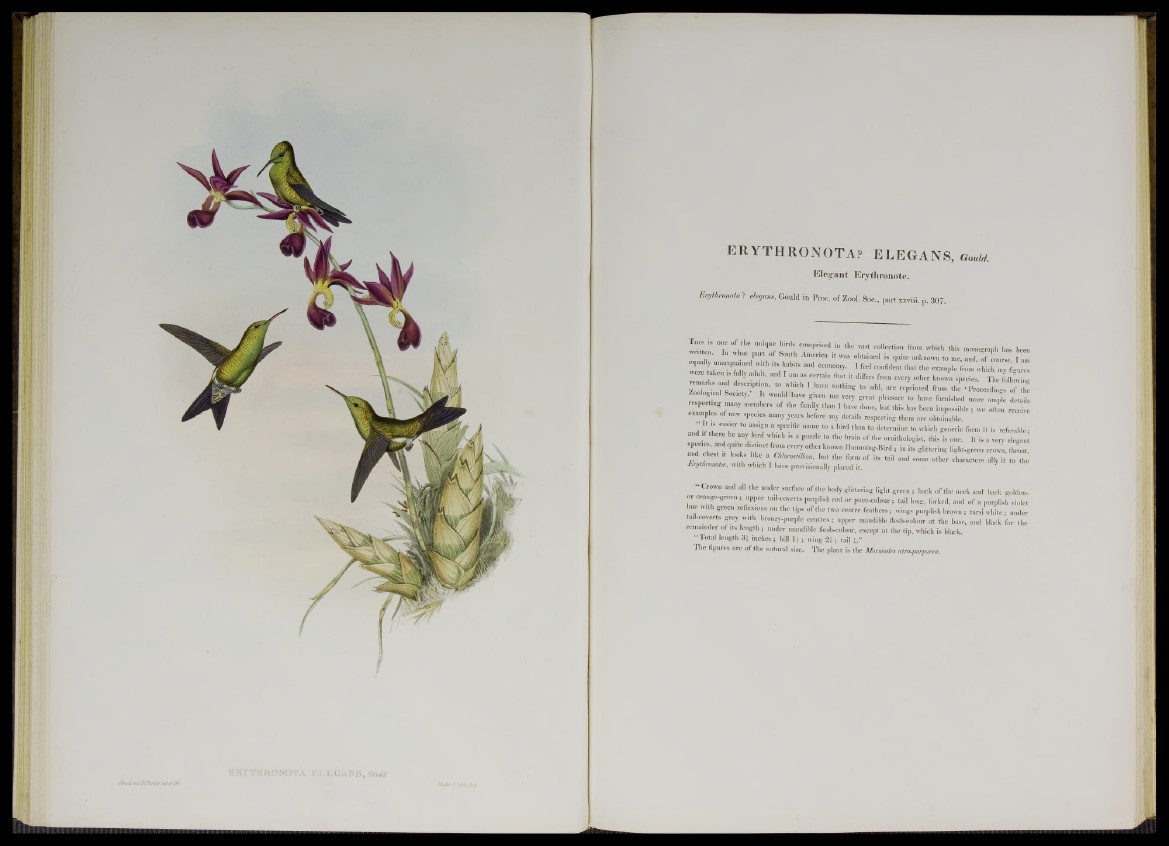
e r y t h r o n o t a ? ELEGANS, G o M .
Elegant Erythronote.
Erythronota ? d eyam, Gould in Proc. o f Zool. Soc., p a rt xxviii. p . 307.
„ „ • , • , . — uuwmea is quite uuknovvn to me, and, of course I air
B H B m B B I 1 hTabitS and ccononly- g 1 confident that the example from which my ¿gore;
were tak en g fully adult, and I am as certam that it differs from every other known species. The follow™
remarks and description, to which I have nothing to add, are reprinted from the^ Proeeedbgs of do
Zoological Society. It would have given me very great pleasure to have furnished more ample detail,
respec ,ng many members of the family than I have done, but this has been impossible ; we often receiw
examples of new species many years before any details respecting them are obtainable.
■ It is easier to assign a specific name to a bird than to determine to which generic form it is referable ■
and if there be any bird which is a puzzle to the brain of the ornithologist, this is one. It is a very elegant
B h I I I H H P h H ! i" its glittering light-green crown, throat,
and chest it looks like a G iW f t f c , but the form of its tail and some other characters ally it to the
Jorythronotte, with which I have provisionally placed it.
“ Crown and all the under surface of the body glittering light green ; back of the neck and back golden,
or orange-green ; upper tad-coverts purplish red or puce-colour; tail long, forked, and of a purplish violet
hue with green reflexions on the tips of the two centre feathers; wings purplish brown ; tarsi white; under
tad-coverts grey with bronzy-purple centres; upper mandible flesh-colour at the base, and black for the
remainder of its length ; under mandible flesh-colour, except at the tip, which is black.
“ Total length 3 i inches ; bill l £ ; wing 2 | ; tail f .”
The figures are of the natural size. The plant is the Mormodes atro-purpurea.